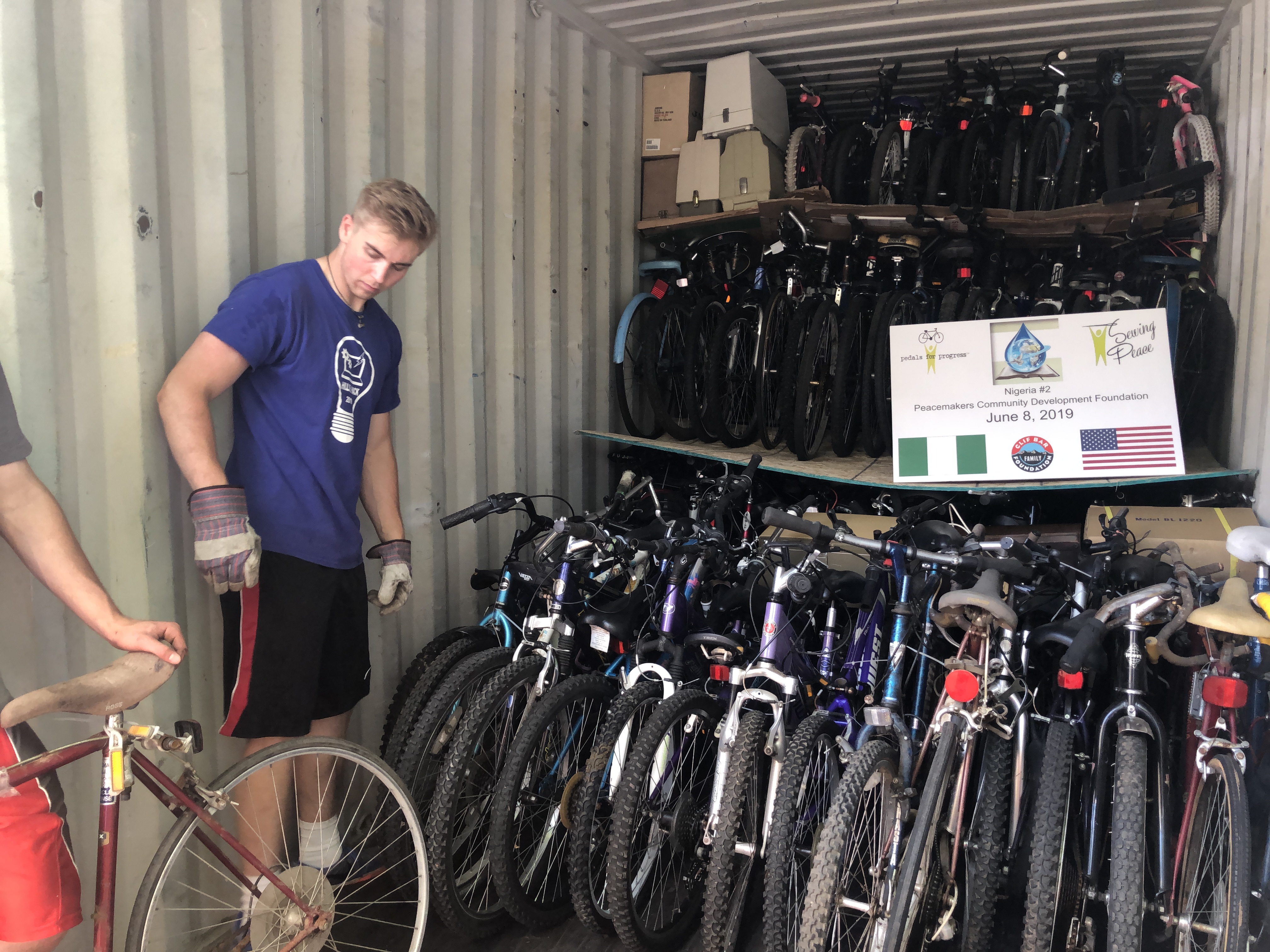By David Schweidenback
February 2020
In February 2021 I will have spent 30 years collecting bicycles. A lot has changed over the years. Initially we received mainly 10-speed bicycles with a smattering of old English 3-speeds. The most common brands were Schwinn and Huffy. Today we receive mainly mountain bikes and the most common brand name by far is Trek! This is actually quite an improvement because mountain bikes are much more useful in the areas we ship to.
When I started we received one 20-inch-tire bicycle for every two adult bikes we collected. This was important for several reasons. A 20-inch BMX or banana-seat bicycle is a great bicycle overseas. It’s the correct size for many adults in the developing world. And these bikes are basically indestructible.
 The 20-inch bicycles were also very important in shipping. When we load a container, we put a row of adult bikes side-to-side in the container, plywood on top of them, and then a second tier of adult bikes. We then put cardboard on top of the second tier of adult bikes and have enough room to stand up a row of 20-inch bikes as a third tier. This arrangement uses all the space in the container, so we can fit more bikes.
The 20-inch bicycles were also very important in shipping. When we load a container, we put a row of adult bikes side-to-side in the container, plywood on top of them, and then a second tier of adult bikes. We then put cardboard on top of the second tier of adult bikes and have enough room to stand up a row of 20-inch bikes as a third tier. This arrangement uses all the space in the container, so we can fit more bikes.
During the last year or two we started just getting fewer and fewer 20-inch bicycles. When I first started we had no competition for bicycles but now there is significant competition from other groups that are also collecting bicycles for their own domestic purposes. Initially I just assumed someone else was getting those bikes before Pedals for Progress could. The number of 20-inch bikes just continued declining and I realized that competition could not explain the lack of collectible 20-inch bikes. It really has become a problem in the loading process: instead of rolling 20-inch bikes on top of the second tier we now need to lay adult bikes flat on top, which is very strenuous for the guys doing the loading: they’re in a cramped space, lifting 30-pound bikes, and bending forward to stack them.
I was speaking with a bike shop owner and I mentioned this problem of not having enough 20-inch bikes to fill the smaller places in our containers. He was not surprised at all and told me that although he had 20-inch bikes in his shop he almost never sold any. That’s when the light bulb lit up in my mind.
It is not competition taking the bikes but just the sheer lack of availability. Very few 10-year-old kids ask their parents for a bicycle for their birthday. New iPhones and virtual-reality goggles are preferred. There are still many kids of that age who have a bicycle, but every 10-year-old used to have a bike. Now it seems having a bike at that age is the exception, not the norm. Who knew? The lack of 20-inch bicycles is not some fault in our collection system. It is not a serious problem that threatens our Corporation but I was glad to learn the lesson: societies change.
